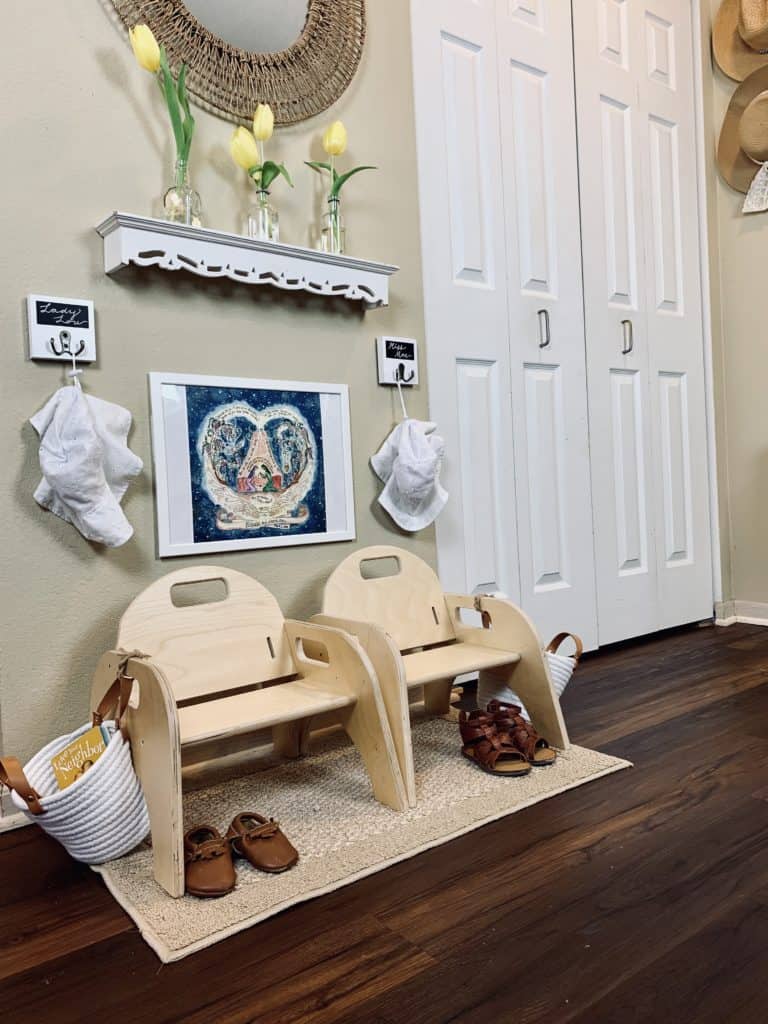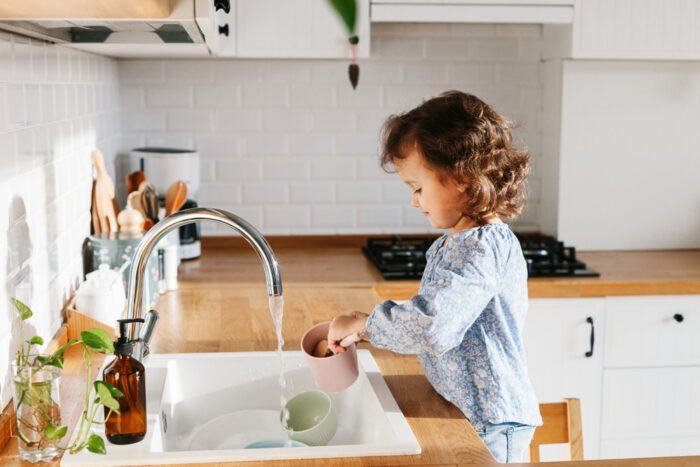
Entrance to the house:
- Slippers, hats, coats… necessary things for children when going out need to have a clear, fixed place;
- Low chairs are suitable for children to sit and put on/take off shoes.

Play area:
- The utensil shelf is designed so that children can pick it up and put it away easily,
- Maximum of 6 items on the shelves, the rest stored in a rotating warehouse that is replaced every week;
- Book basket: Maximum 6 books, rotating and changing weekly;
- Use trays and baskets for activities with many small items.

Kitchen area:
- Pick up/put away dining table utensils yourself;
- There is a fixed place for cleaning tools: towels, brooms, dustpan, mop,…
- Washing area within reach;
- Keep detergents and sharp objects out of sight and reach.

Toilet:
- The items that children need to use are placed within their reach and reach, so they can be free and practice self-care;
- Consider child safety: need to prepare sturdy and safe stools/chairs. The floor needs to be dry.

Bedroom:
- Safe height, children get up and down and prepare the bed themselves.
- There is a place to store blankets and pillows and take them out easily
- The wardrobe is designed so that children can get it themselves. Can divide the area for shirts or pants. You should keep a few sets and then change or change the size.
- Clothes that are larger than the child’s to make it easier to dress/undress independently
- Sorting clothes, socks, coats,…
- Practice folding clothes
- Let your child try his best, only support when absolutely necessary.

Outside area
- Move freely: create enough space for children to move
- Take care of the outside environment: water plants, sow seeds, sweep the yard.
- Observe plants, animals, birds, butterflies, bees,…
- If you live in an apartment, you can let your children grow plants in plastic bottles, water them, prune leaves, raise fish in tanks, etc. This is also a suitable support for children.
- Below are some things to keep in mind when designing a safe home environment for children
- Cover all electrical outlets within reach of children. By a type of socket cover that is available on the market.
- Install safety screens and window guards to secure children’s bedrooms, stairwells and other rooms. You don’t want your child to be able to get in or out – Climbing stairs is a very good form of exercise for children. But if you cannot keep an eye on your child regularly, you still need to ensure safety in this area.
- Reinforce or remove all electrical cords on the floor or anywhere children can reach.
- Many indoor plants cause dangerous toxins, so get rid of them.
- Remove or lock cabinets containing medicines, chemicals, tools, cutlery and any other dangerous items.
- Use the stove’s safety lock to turn the pot handle inward while cooking.
- Keep an eye on your child and give timely instructions when he or she is in the bathroom. Toilets, dryers, razors… are dangerous objects and should not be used by children alone without adult supervision.
- All glassware is expensive if you don’t want your kids to use it. Then at the stage of establishing a Montessori environment at home. You can store them high and limit their use.





